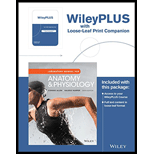
(a)
To label: The structures in figure 20.10 (a)
Introduction: The brain is the most vital organ in the human body. The brain has three major regions namely cerebrum, brainstem, and cerebellum. The brain is the central process unit of the body as most of the process like voluntary to involuntary function and cognitive function are carried out by the brain.
(b)
To label: The structures in figure 20.10 (b).
Introduction: The epithelial cell is formed by joining cells that together form layers of epithelial cells in the body. The epithelial cells have important functions like protecting the tissue layers and hence they are always found on the surface of the organs and tissues. The epithelial cells also act as a barrier to control the movement of molecules in-between the glands.
(c).
To label: The structures in figure 20.10 (c).
Introduction: The epithelial cells are usually found on the body surfaces and all the surfaces of the organs like skin, urinary tract, organ surfaces, and in blood vessels. The epithelial cells are one of the primary tissue in the body that take most of the functions in the body system. A simple epithelium can be of three types like simple cuboidal, simple squamous, and simple columnar.
Want to see the full answer?
Check out a sample textbook solution
Chapter 20 Solutions
Laboratory Manual for Anatomy and Physiology, 6e Loose-Leaf Print Companion
 Human Anatomy & Physiology (11th Edition)BiologyISBN:9780134580999Author:Elaine N. Marieb, Katja N. HoehnPublisher:PEARSON
Human Anatomy & Physiology (11th Edition)BiologyISBN:9780134580999Author:Elaine N. Marieb, Katja N. HoehnPublisher:PEARSON Biology 2eBiologyISBN:9781947172517Author:Matthew Douglas, Jung Choi, Mary Ann ClarkPublisher:OpenStax
Biology 2eBiologyISBN:9781947172517Author:Matthew Douglas, Jung Choi, Mary Ann ClarkPublisher:OpenStax Anatomy & PhysiologyBiologyISBN:9781259398629Author:McKinley, Michael P., O'loughlin, Valerie Dean, Bidle, Theresa StouterPublisher:Mcgraw Hill Education,
Anatomy & PhysiologyBiologyISBN:9781259398629Author:McKinley, Michael P., O'loughlin, Valerie Dean, Bidle, Theresa StouterPublisher:Mcgraw Hill Education, Molecular Biology of the Cell (Sixth Edition)BiologyISBN:9780815344322Author:Bruce Alberts, Alexander D. Johnson, Julian Lewis, David Morgan, Martin Raff, Keith Roberts, Peter WalterPublisher:W. W. Norton & Company
Molecular Biology of the Cell (Sixth Edition)BiologyISBN:9780815344322Author:Bruce Alberts, Alexander D. Johnson, Julian Lewis, David Morgan, Martin Raff, Keith Roberts, Peter WalterPublisher:W. W. Norton & Company Laboratory Manual For Human Anatomy & PhysiologyBiologyISBN:9781260159363Author:Martin, Terry R., Prentice-craver, CynthiaPublisher:McGraw-Hill Publishing Co.
Laboratory Manual For Human Anatomy & PhysiologyBiologyISBN:9781260159363Author:Martin, Terry R., Prentice-craver, CynthiaPublisher:McGraw-Hill Publishing Co. Inquiry Into Life (16th Edition)BiologyISBN:9781260231700Author:Sylvia S. Mader, Michael WindelspechtPublisher:McGraw Hill Education
Inquiry Into Life (16th Edition)BiologyISBN:9781260231700Author:Sylvia S. Mader, Michael WindelspechtPublisher:McGraw Hill Education





